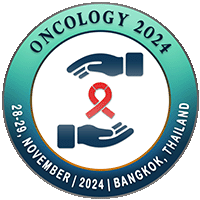
Amal Jouda
Zagazig University Hospitals, EgyptTitle: HCC after DAA the challenge and the risk
Abstract
In 2018, Egypt has started a
campaign for mass diagnosis and treatment of HCV with sofosbuvir based regimens. The campaign managed over the past four years to diagnose and
treat a huge number of patients with HCV at different grades of the disease
with a rateof sustained virological response that exceeds 95%. The campaign
was successful and managed to decrease the prevalence of HCV in Egypt and
actually solve this national HCV problem. The reason for that is, DAA’s have
fewer side effects than INF based regimens, the quality that makes them more
tolerable and enhances patients’ compliance and make them more suitable to use
even in patients with advanced liver disease. Before the national campaign
started there were studies that raised concerns about the impact of use of DAA
in patients with advanced liver disease and in patients with previous ablation
of HCC. Those studies claimed that use of DAA can actually enhance carcinogensis i.e appearance of denovo HCC and recurrence of HCC after
ablation. Those studies even claimed that the recurrence was found to be more
extensive and aggressive and less responsive to treatment. The health authorities choose to
proceed despite those concerns. The reason for this was, first, patients with
chronic hepatitis who have not become cirrhotic yet and those who have a
well-functioning liver were not supposed to have any risk. Those patients were
previously eligible for interferon therapy with approximately 55% chance of
achieving SVR. Another thing is, most patients with advanced liver disease and
those with HCC were not eligible for interferon therapy. It became clear that
those patients do not have an alternative therapy to help them achieve viral
clearance. Finally, Viral clearance will not only stop further deterioration of
their liver disease, but also will prevent the spread of the disease in the society. A metanalysis study published in
2017 analyzed the results of 41 studies that came with similar conclusions that
DAA increase the risk of denovo and recurrent HCC and found no direct
correlation between DAA and carcingensis. It also found that there are many
individual risk factors for carcingensis that should be investigated before
your patient starts DAA. This study brought the debate to an end. Wider scale studies were
published after the initiation of the campaign based on data from the Egyptian patients
and most of them were in favor of the used of DAA in patients with HCV and that
the use of DAA was associated with a decline in the all-cause mortality. The
studies also emphasized the role of understanding the risk factors of liver
carcinogenesis in every individual patient so that patients at higher risk
referred to tighter follow up schedules to detect focal lesions as early as
possible.
Biography
TBA!!!

